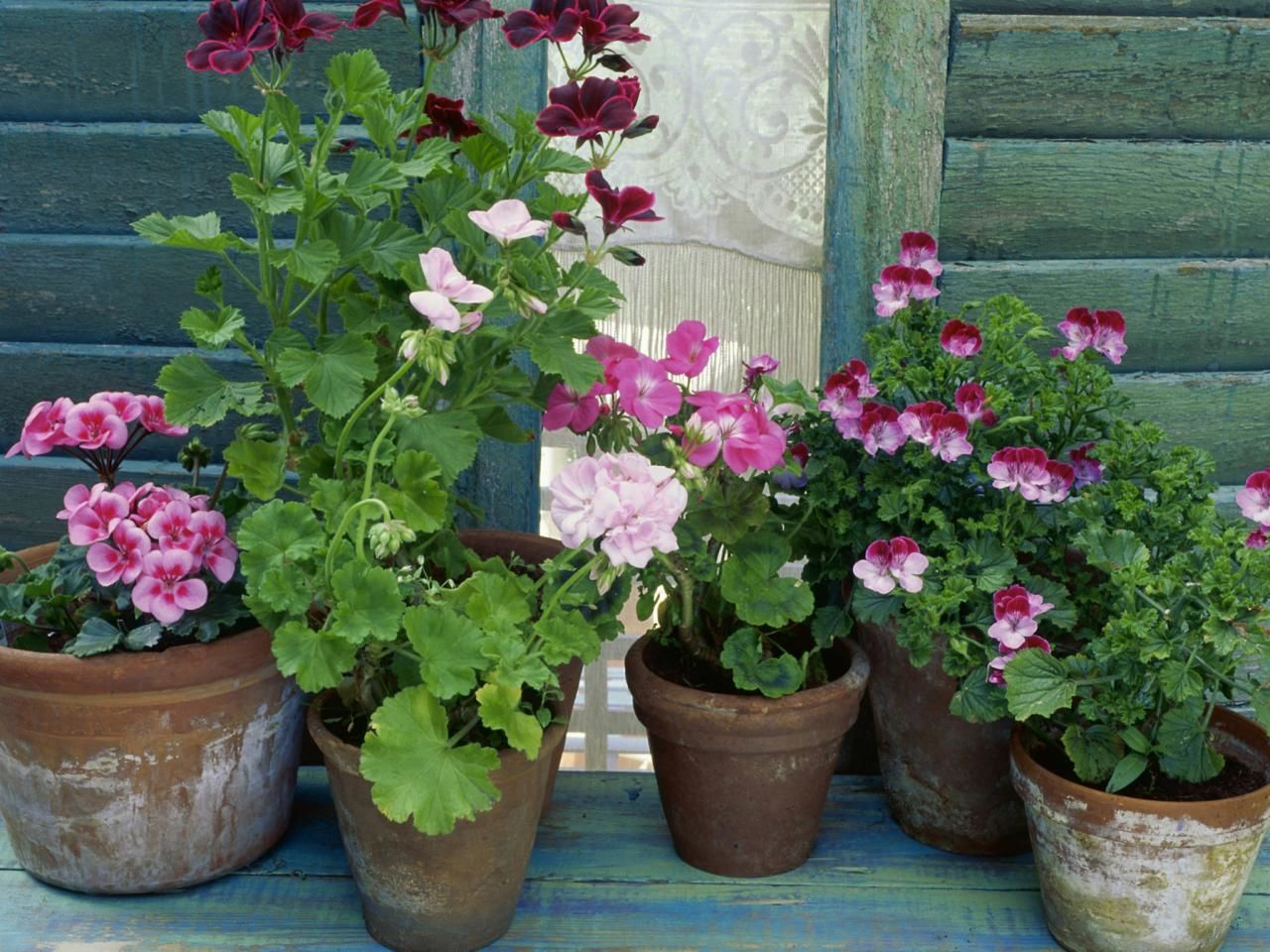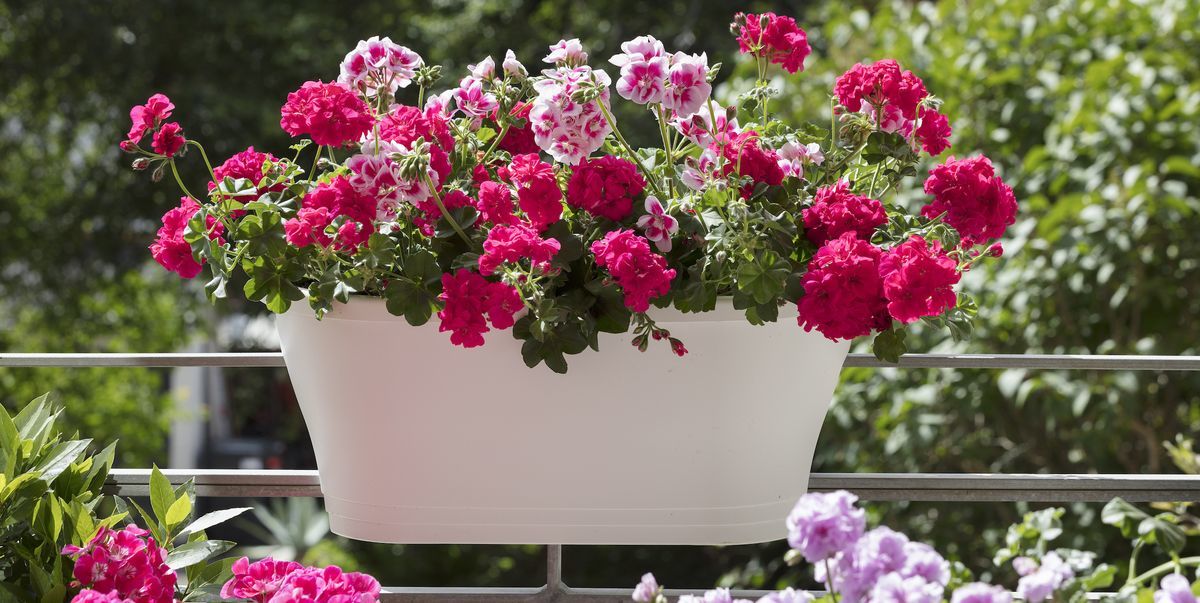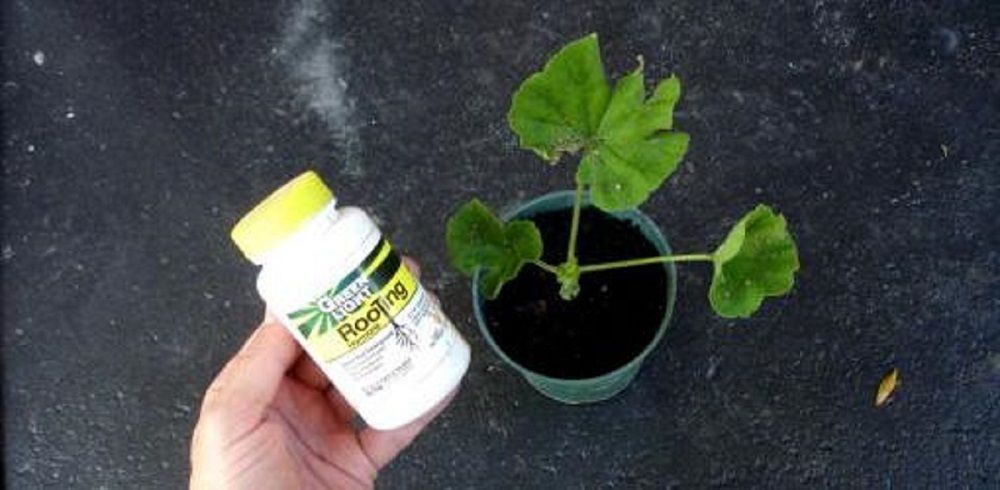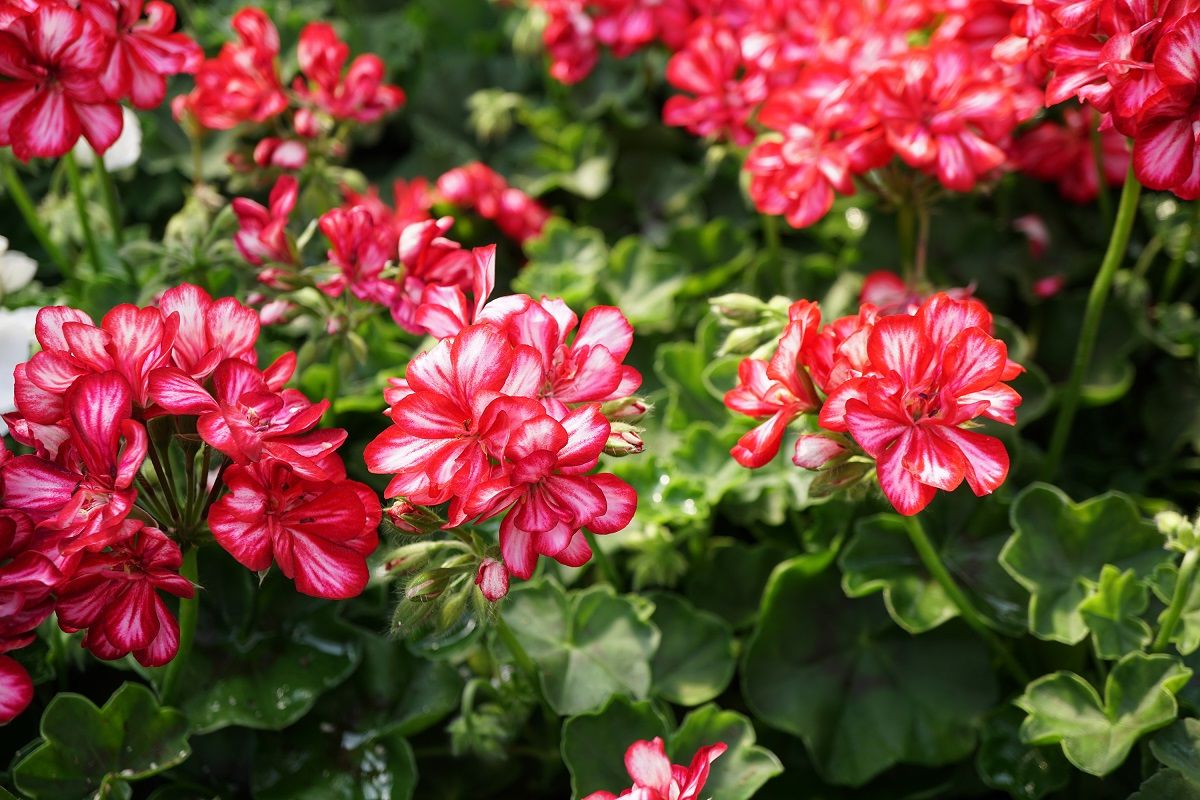Unlike many of their peers, geraniums can easily be stored over the winter and enjoyed again next year. So if you hate to see your lovely geraniums killed by frost this fall, here’s how to go about overwintering them indoors.
Methods of Overwintering Geraniums
There are three ways to make geraniums last through the winter:
1. Overwinter inside as potted plants.
2. Store the dormant, bare roots.
3. Propagate cuttings to make new plants.

Geraniums as Indoor Potted Plants
The easiest way to keep your geraniums over the winter is simply to bring them inside. Here’s how to go about it:
Fall:
* Before the first frost, carefully dig up your geraniums and pot them in 6”- 8” diameter containers, with lightweight potting soil. If yours are already in containers, you get to save a step! Don’t bother keeping any that look unhealthy or diseased.
* Cut the plants back by a third to a half. Save the cuttings and root them to make more geraniums!
* Water the pots thoroughly.
* Place the pots in a bright, cool spot. Geraniums overwinter best in a sunny window with temperatures around 60° F. They don’t do well in dark or overheated rooms.
Winter:
* Over the winter, pinch back the tips of new shoots to help them branch out.
* Water the cuttings whenever the soil becomes dry.
Spring:
* Fertilize your geraniums in mid-spring.
* Move them back outdoors after all danger of frost has passed. You can keep them in their containers, or plant them back in your flower beds.
 Geraniums are perfect for window boxes, but can’t survive freezing weather.
Geraniums are perfect for window boxes, but can’t survive freezing weather.Overwintering Bare-Root Geraniums
Geraniums have nice thick roots and stems that allow them to survive winter dormancy if kept above freezing. You can also allow geraniums to go dormant and store them as bare roots. Follow these steps:
Fall:
* Before the first frost, carefully dig up your geraniums, and shake all the dirt off the roots.
* Put them in unsealed paper bags, or hang them upside down, and store in a cool, dry place around 50° F (a garage is perfect).
Winter:
* Every month or so, pull your geraniums out and soak the roots in water for a couple of hours.
* Allow them to dry before storing again.
* The leaves will eventually all fall off, but the stems should stay firm. If the stems shrivel up too, the plant is likely a goner!
Spring:
* Inspect your geraniums early in the spring.
* Remove any shriveled sections.
* prune them lightly, cutting off any dead tips.
* Soak the roots for a few hours in water mixed with a little plant food.
* Plant the roots in potting soil and water thoroughly.
* Place your potted geraniums in a sunny window, or under a grow light. They might take a few weeks to wake up and start growing!
* After all danger of frost has passed, you can move them outdoors.
 Geraniums can also be rooted from cutting using rooting hormone.
Geraniums can also be rooted from cutting using rooting hormone.Propagating Geraniums From Cuttings
The last option is to say goodbye to your original geraniums and nurture new ones grown from cuttings. Here’s how:
Fall:
* Using a sharp knife or shears, cut pieces about 3”- 4” long from the ends of the branches. The best cuttings come from the terminal end (the very tip end of the stem), rather than a side branch.
* Pinch off the leaves from the bottom third of the cutting, and remove any flower buds.
* Dip the bottom of each cutting in rooting hormone, making sure to dust the wounds where you removed the leaves.
* Plant the bottom third of each cutting in peat moss, sand, or perlite. You can use individual pots or plant them together in a tray (plastic planting trays are available with a clear cover to hold in moisture).
* Place the pots on a drainage tray and water thoroughly, ideally from the bottom up (fill the tray with water and allow it to soak to keep from washing away the rooting hormone).
* Cover your pots with clear plastic, or use the cover that came with the tray.
* Place in a bright window out of direct sun. Your cuttings need light, but they can’t handle the direct sunshine.
Winter:
* Keep the planting medium moist by soaking in the drainage tray, or removing the plastic cover and lightly misting the plants and soil.
Spring:
* Your cuttings should root in 6 to 8 weeks. By early next spring, you can to move them to their own pots with regular potting soil.
* Fertilize your new plants, and pinch back the new stems in order to make them branch out.
* Move the pots to a sunny window until time to plant them outdoors.




![A Tranquil Jungle House That Incorporates Japanese Ethos [Video]](https://asean2.ainewslabs.com/images/22/08/b-2ennetkmmnn_t.jpg)









